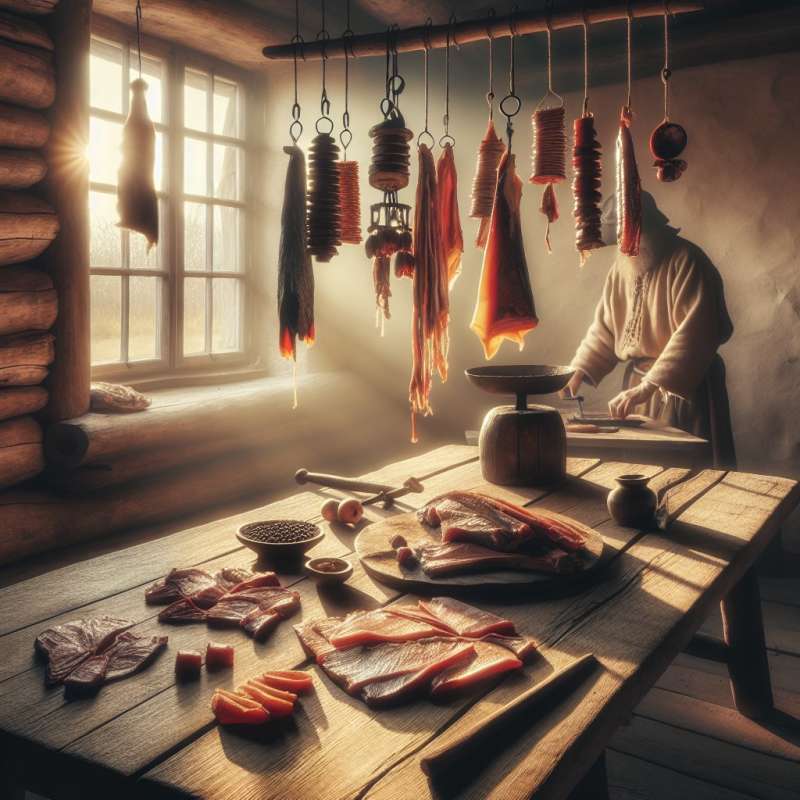
History of Meat Drying
The practice of meat drying dates back to ancient times, serving as a method to preserve food without refrigeration. It enabled early humans to store food for harsh seasons and long journeys.
Drying Methods Varied
Traditional techniques vary by culture, including air-drying under the sun, smoking over a fire, or wind-drying in arid climates. Each method imparts unique flavors and textures to the meat.
Microbial Inhibition
Drying meat reduces moisture content, inhibiting bacterial growth. Salt and spices are often added, not just for flavor, but also for their antimicrobial properties, enhancing preservation.
Nutritional Preservation
Dried meat retains most of the nutrients found in fresh meat, especially protein. This made it a valuable, nutrient-dense food source for ancient hunters and travelers.
Cultural Significance
Dried meats hold cultural importance, often featured in traditional dishes and ceremonies. Examples include South African biltong, Italian bresaola, and North American jerky.
Modern Adaptations
Contemporary drying involves controlled environments using dehydrators or ovens. These methods provide consistent results while still respecting traditional flavors and techniques.
Sustainable Practices
Traditional meat drying is eco-friendly, requiring no electricity. It's seen as a sustainable food preservation method, aligning with today's environmental conservation efforts.Ancient Meat Mummies
In ancient Egypt, dried meats were placed in tombs as sustenance for the afterlife, essentially creating meat 'mummies' for the deceased.
What was meat drying's initial purpose?
Improve meat taste
Preserve food historically
Make food transportable
Company